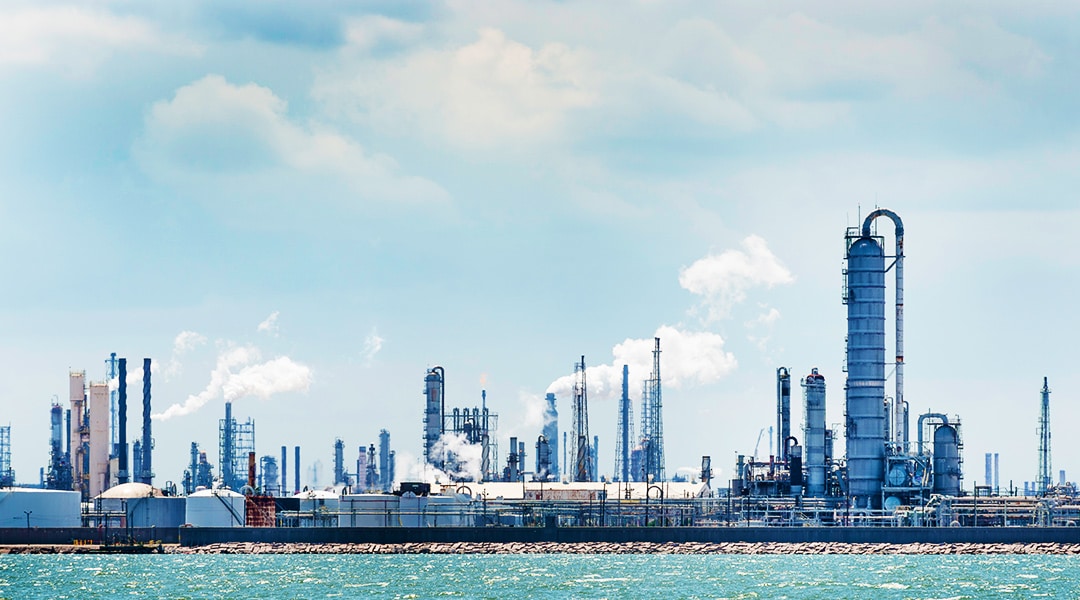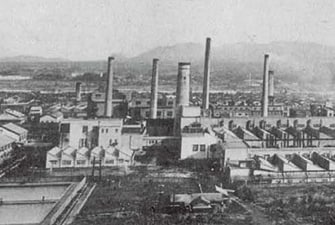#06
Reducing the environmental impact of materials through smart manufacturing
According to the World Business Council for Sustainable Development, we are currently consuming more than twice the resources that our planet can replenish – so the race is on to do more with less.

The global drive to build a more sustainable world would be unthinkable without the materials industry – from the carbon fiber that imparts strength and flexibility to the blades of giant wind turbines, to the lithium-ion batteries that are powering electric vehicles. But a paradox lies at the heart of this industrial transformation – the effort to decarbonize production is consuming more resources than the planet can replenish on its own. As a result, all industries face one of the greatest challenges of our time: how to fulfil the demands of a growing, and increasingly urban, global population without destroying the planet that sustains us.
TConsider the petrochemicals industry. No one would question the positive contribution of petrochemicals to society, from pharmaceutical drugs and medical devices to key components in the technology and renewable energy industries. Nevertheless, the International Energy Agency (IEA) trained a spotlight on the petrochemicals industry in a major study that underscores its role as the largest driver of global oil-demand growth – much higher than cars, airplanes, trucks or shipping. Petrochemicals are currently the largest industrial energy consumer and the third-largest industrial emitter of greenhouse gas (GHG) emissions, which are set to increase 20 percent by 2030, the report found. “Petrochemicals are one of the key blind spots in the global energy debate, especially given the influence they will exert on future energy trends,” says Dr Fatih Birol, the IEA’s Executive Director.
Mounting concern over climate change, and the rising concentration of greenhouse gas emissions that cause global warming, mean that the materials sector and its end users, including consumers, have never been under such pressure to clean up their act.
The good news is, companies are responding to the challenge with more sustainable and energy-efficient manufacturing processes, and with green innovation products that are driving new business growth, as well as “greening” the supply chains of many industries. Smart manufacturing, when allied to innovative chemistry, is the answer to reducing the climate footprint of materials.
Measuring and managing the issue
This is not to underestimate the challenge. According to the World Business Council for Sustainable Development, there will have to be a four- to tenfold improvement in the eco-efficiency of resources and materials by 2050 for a world of nine billion people to live well, and within the resources of our planet.
The Toray Group of companies takes this challenge seriously. It has always believed that materials change lives for the better and, in the 21st century, this means investing in innovative technologies and advanced materials to address the most pressing issues of our day: climate change, water scarcity and resource depletion.
But for progress to be managed, it must first be measured, so Toray has set itself a number of targets to achieve by 2030. These include multiplying the number of green innovation products by a factor of four, thereby helping to avoid eight times more carbon dioxide (CO2) emissions in the value chain; tripling the total annual volume of water treated using Toray’s water- treatment membranes; reducing greenhouse gas emissions in production activities by 30 percent per unit of sales across the entire Toray Group by introducing renewable energy and other initiatives; and reducing water usage in production activities by 30 percent per unit of sales.
For example, in response to growing concern and the tighter regulation of volatile organic compounds (VOC), which are used in solvents, glues and printing processes and which can trigger long-term health problems if inhaled, Toray developed a waterless offset printing system for flexible packaging – the kind that is used to wrap food or to make refill containers for detergents and shampoos.
The new production process uses an ink-drying method, with energy-saving LED-UV or electron beam (EB) lights, that eliminates the need for drying solvents that release VOCs and significantly cuts CO2 emissions related to the energy consumed in the manufacturing process. This innovative product will, in turn, help the printing supply chain – which includes ink producers, printing-press manufacturers and printing companies – to reduce their collective climate footprint. “Waterless printing not only offers the highest-quality printing in the industry, it is also the most environmentally friendly,” says Tapp Label Technologies of the US. Toray estimates the new procedure will help eliminate some 500,000 tonnes of CO2 per year in Japan alone by 2030, equivalent to removing 96,000 cars from the road, according to the United States Environmental Protection Agency’s greenhouse gas equivalencies calculator.
New-generation recycling
To wean the world off its oil dependence, Toray is also developing new, eco-friendly plant-based fibers to replace polyester and other materials derived from petrochemicals. One example is the company’s success in producing laboratory-scale samples of the world’s first fully bio-based polyethylene terephthalate (PET) fiber – produced solely from biomass feedstock.
But what to do with all the plastic that finds its way into our oceans? One answer may lie in recycling and reusing plastic-based materials. Two Toray initiatives show how this can be done. One collects discarded plastic bottles and other leftover materials, which are then processed into pellets and spun into fibers and yarns that can be woven into new, recycled fabrics. Another recycling process creates new recycled nylon fiber from discarded nylon clothes.
Much more remains to be done, but it is initiatives such as these that will allow the world to advance towards a more sustainable future.



